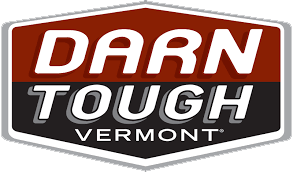Green Mountain Club 2017-2022 Strategic Plan
Strategic planning serves a critical purpose of “checking in” on the directions the Club is taking and involves building a work plan for the upcoming years. As we do this we assess the changes in our funding context, our demographic environment, and the uses and pressures on the trails that we work to maintain and protect. The five-year strategic plan is a living document that guides our work. While much of our mission is set and not bounded by time, our priorities and activities do change based on the changes we see around us. The Plan will involve annual review and measurement of achievement versus aspirations.
The mission of the Green Mountain Club is to make the Vermont mountains play a larger part in the life of the people by protecting and maintaining the Long Trail System and fostering, through education, the stewardship of Vermont’s hiking trails and mountains.
The mission is as valid today as it was in 1910. Access to quality community recreation is something that makes Vermont a special place to live and visit. Hiking remains one of the best ways to connect people with their natural world and build the next generation of trail stewards and conservation leaders.
Trails and Lands
The club has protected all but 6.5 miles of the 272-mile Long Trail corridor and permanently protected all major river crossings. The club manages more than 500 miles of trails, and has more than $11,000,000 in assets including our endowment, trail structures, and the Waterbury Center campus. GMC is also responsible for managing and monitoring conservation interests on 25,000 acres of conserved land.
Trail usage on the Long Trail and Appalachian Trail in Vermont has seen double-digit increases since 2015. Increased use means greater impact and responsibility. GMC processed more than 14 tons of raw sewage at 19 overnight sites in 2016 and moved 12 pit privies. This number is likely to rise as trail use continues to increase.
Climate change data over a 50-year period collected at Hubbard Brook Research Station in New Hampshire show a clear trend in New England: it’s getting warmer and wetter. Climate data can help us prepare for changes to the forest system and make better trail resource management decisions, e.g. trail design and placement, shelter siting, water control, and invasive species management.
Funding and Demographics
“Baby Boomers” born between 1946-1964 are in their highest earning years and are a major segment of the Vermont population and club membership. As this population ages, their earnings will decrease and their contributions to the nonprofit sector will shift toward bequests and planned giving. GMC needs to be planning one or two generations ahead and think through the various generations of donors.
Direct contributions have increased yearly since 2015 and will likely remain strong for the next 5-10 years. Availability of state and federal funding to support trails is uncertain and the club needs to prepare for the impact reduced public funding could have on the trail system.
Membership and Volunteers
Membership data collected between 2000 and 2016 indicate that our core membership of 9,500 is stable but aging, with the median age of members increasing by ten years since 2000.
More than 200,000 people visit trails managed by GMC each year. The data indicate that our current membership represents only a fraction of total trail users. As an organization, we need to understand our concept of membership—why people join, why they remain, and what they look for from GMC.
GMC has published the Long Trail Guide since 1917 and Long Trail News since the 1920s. Print and electronic communications serve as the primary conduit of information between the club, its members, and the public. Electronic and social media is a growing part of the club’s communication portfolio and enables us to reach new and broader audiences.
Volunteers play an imperative role in fundraising for GMC during capital campaigns, special projects, and general support throughout the year. Volunteers not only add to the club’s fundraising capacity, but serve as access points to wealth and power.
This plan was developed by GMC Board, staff, and standing committees with input from the membership and is designed with four key themes: Protecting and Managing the Trail Resource, Operational Excellence, Engagement & Inclusion, and Strengthening our Sections, Membership, and Volunteers.
Theme: Protecting and Managing the Trail Resource
Goal 1: Effectively manage the Long Trail System
1. Outcome: Achieve parity in treadway construction and maintenance across our existing trail system regardless of ownership
Strategies
- a) By 2018, complete an assessment of trail infrastructure and develop an action plan for upkeep, conversion, or replacement including examination of reliable of water sources and year-round waste management strategies
- b) By 2019, begin deploying additional trail crew capacity to address the backlog of trail hardening work north of Rt. 15 in Johnson
- c) Support construction of developing trail systems including the Bluff Mountain Trail in the Northeast Kingdom
2. Outcome: Trail infrastructure and facilities are designed and managed to handle increased hiker use and impacts of a changing climate
Strategies
- a) Employ and train sufficient backcountry caretaker capacity to manage high-use locations across the Long Trail System
- b) By 2018, assess feasibility of establishing contingency fund for the impact of extreme weather events that can cause widespread damage to the Long Trail System
- c) By 2018, Trail Management Committee to update Long Trail System management plan to account for new and emerging uses while keeping the trail undeveloped
Goal 2: Responsibly steward Long Trail System and Appalachian Trail land and easements
1. Outcome: Develop a plan and timeline to bring the Land Conservation Program up to Land Trust Alliance Standards and Practices
Strategies
- a) Maintain an active and sustainable corridor monitoring program for GMC conserved and managed lands
- Identify timeline to build sufficient staff and volunteer capacity to provide regular and consistent leadership support to active monitors with trainings, field visits, and annual recognition
- By 2018, staff to provide clear expectations and support for regular and high-quality volunteer reporting of boundary, land, and encroachment conditions
- b) Keep accurate and up-to-date trail and land conservation records
- By 2019, develop a database that tracks properties from acquisition to stewardship
- By 2020, enhance GIS capacity to map and track GMC trails and protected lands
- By 2020, develop and keep up-dated land management records, such as baseline documentation reports and management plans
- Achieve annual communications with land owners
2. Outcome: Pursue full protection of the Long Trail
Strategies
- a) By 2019, develop protection priorities and progress bench marks for corridor lands
- b) With the Development Committee, identify funding sources and strategies that can be mobilized when land protection opportunities with willing-sellers arise
- c) Work in partnership with allied organizations to complete land protection transactions
3. Outcome: Land Conservation portion of our mission is incorporated into GMC’s identity and communications
Strategies
- a) Starting in 2017, highlight land conservation program and projects in GMC communication channels, such as the Long Trail News, social media, and blog
- b) Starting in 2017, promote and market the organization as a conserver and steward of the Green Mountain range
Theme: Operational Excellence
Goal 1: GMC diversifies its sources of operating funds and programs are fully funded
1. Outcome: Strong and diverse annual fundraising – with reduced dependence on government support
Strategies
- a) Beginning in 2017, expand corporate giving and membership by directly engaging businesses and employers who benefit or derive revenue from the trail resource
- b) By 2019, develop a marketing and user engagement program that enables every trail user the opportunity to provide financial support for the trail resource
- c) Starting in 2017, through the Development Committee expand the club’s fundraising power by leveraging and maximizing staff and volunteer capacity
2. Outcome: Add $1.6 million in net contributions to the endowment by 2022.
Strategies
- a) Evaluate the potential for an Endowment Campaign(s). Develop a campaign implementation plan including technical and financial resource needs and annual financial goals by June of 2018 for the remainder of the five-year period
- b) By the end of 2018, build out planned giving program to include regular mailings, ongoing information on gift opportunities, and an active legacy society
- c) By the end of 2020, expand the suite of endowment giving opportunities to include trail miles, shelters, camps, staff positions and trail crews
3. Outcome: A strong and expanded financial planning infrastructure
Strategies
- a) By June 2018, develop a capital plan
- b) Continue to build a working capital fund of 5% of annual operating budget.
- c) By the end of 2018, develop a financial contingency plan for potential federal fund reductions.
- d) Provide exceptional financial management and controls; measured in part by annual achievement of internal performance targets and external review
Goal 2: Green Mountain Club becomes an Employer of Choice
1. Outcome: Build and maintain a high-functioning, supported, and empowered staff that strives for results and works as a team
Strategies
- a) Develop a staffing plan and support structure including appropriate and competitive compensation and benefits
- By 2020, salary and benefits competitive with other like employers in the northeast.
- Job description and work plans match capacity and ensure positive work-life balance
- Staff and Board share the responsibility of providing an organizational culture that staff want to be part of
- Develop performance measures for the above to hold ourselves accountable
- b) In 2017, identify and plan for increased staff capacity to achieve goals within the strategic plan.
- c) Cultivate future staff leadership and build operational durability to better manage transitions
- d) Develop mechanisms for clear and open communications between and among staff and volunteer leadership
Goal 3: Sustainably manage GMC’s Camp facilities
1. Outcome: Demonstrated success at managing a self-sustaining Camps Program
Strategies
- a) By 2018, based on the trail adopter model, recruit and train sufficient volunteer management capacity for each camp facility
- b) By 2019, develop a policy for evaluating all future camp acquisition opportunities for financial and management sustainability
- c) By 2020, GMC Camps Committee and staff finish developing and up-dating management plans for each GMC Camp facility, including financial sustainability
Theme: Engagement & Inclusion
Goal 1: The GMC is relevant to and supported by those that use and value the trail resource
1. Outcome: GMC’s programs and activities engage and grow the next generation of trail users and leaders
Strategies
- a) By 2018, offer targeted events and outings organized on our website to engage trail users and connect them to the mission of the club
- b) By 2021, evaluate barriers to experiencing the Long Trail for underserved, new, and emerging populations. Partner with community based organizations and service providers to address these barriers
- c) By 2020, deliver an education program that provides consistent opportunities and resources for youth to experience the Long Trail
2. Outcome: GMC’s membership reflects trail users and recreation communities
Strategies
- a) By 2018, implement engagement strategies that provide multiple opportunities for every trail user to know who GMC is and support its work
- b) By 2019, expand marketing of GMC membership, programs, and services to trail users in Vermont, Quebec, and surrounding New England states
- c) Build local leadership and support by recruiting membership and Board leadership from communities that utilize GMC trail systems
3. Outcome: GMC is the “go to” source for Vermont hiking information and resources
Strategies
- a) Produce exceptional serial and electronic communications that provide information on the Long Trail and work of GMC to members and trail users
- b) Produce high quality and accurate print and electronic publications for the Long Trail System
- c) By 2020, expand our hiking center and online presence and platforms to provide up-to-date and accurate trail information to all users
- d) By the end of 2019, develop a plan to evaluate and update trail signage and information kiosks within the trail system to clearly inform the hiking public about the work of GMC and how to volunteer or provide financial support
- e) By 2020, expand the distribution of GMC publications and merchandise to retail outlets within Vermont and surrounding states
Theme: Strengthening our Sections, Membership, and Volunteers
Goal 1: GMC Membership is vibrant and contributes to the mission of the Club
1. Outcome: Sections membership supports the trail resource financially and by volunteering
Strategies
- a) Assess membership model to better account for demographic changes, leadership development, diversity, and revenue generation. By 2021, submit recommendations to the Board of Directors on changes to the GMC membership model.
- b) By 2022, develop programs that foster greater trail resource volunteerism and service learning among Section communities, schools, and corporations
2. Outcome: GMC Sections have the volunteer capacity to manage the trail resource
Strategies
- a) By 2022, build and maintain a membership base sufficient to meet annual trail maintenance responsibilities
- b) By 2018, ensure that Section and main club goals and work planning are aligned and functioning cooperatively
- c) By 2020, implement inter-sectional workshops and trainings to share best practices and increase capacity
- d) In 2018, review section governance to address challenges faced by sections that have limited capacity for outreach, internal networking, and engaging in club opportunities
- e) In 2017, create a Sections’ working group to monitor and support section functionality
- f) Beginning in 2017, explore alternative Section models that enable groups/organizations to actively support the trail resource
3. Outcome: GMC communicates effectively internally and with the public
Strategies
- a) Starting in 2017, institutionalize mechanisms for clear and consistent communication between the main club and sections
- b) GMC to help sections provide consistent website, electronic, and print content and communications
- c) Beginning in 2018, facilitate access to communication training for emerging and existing section leaders and volunteers


















